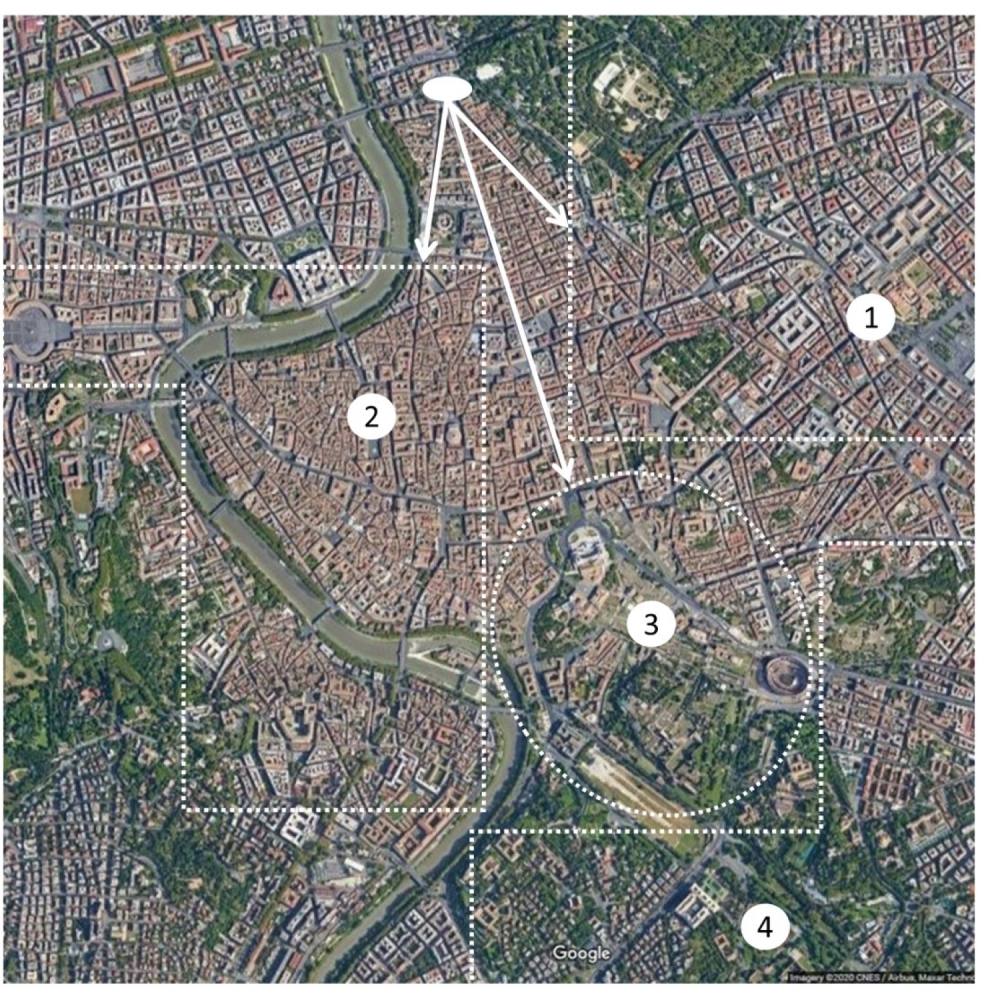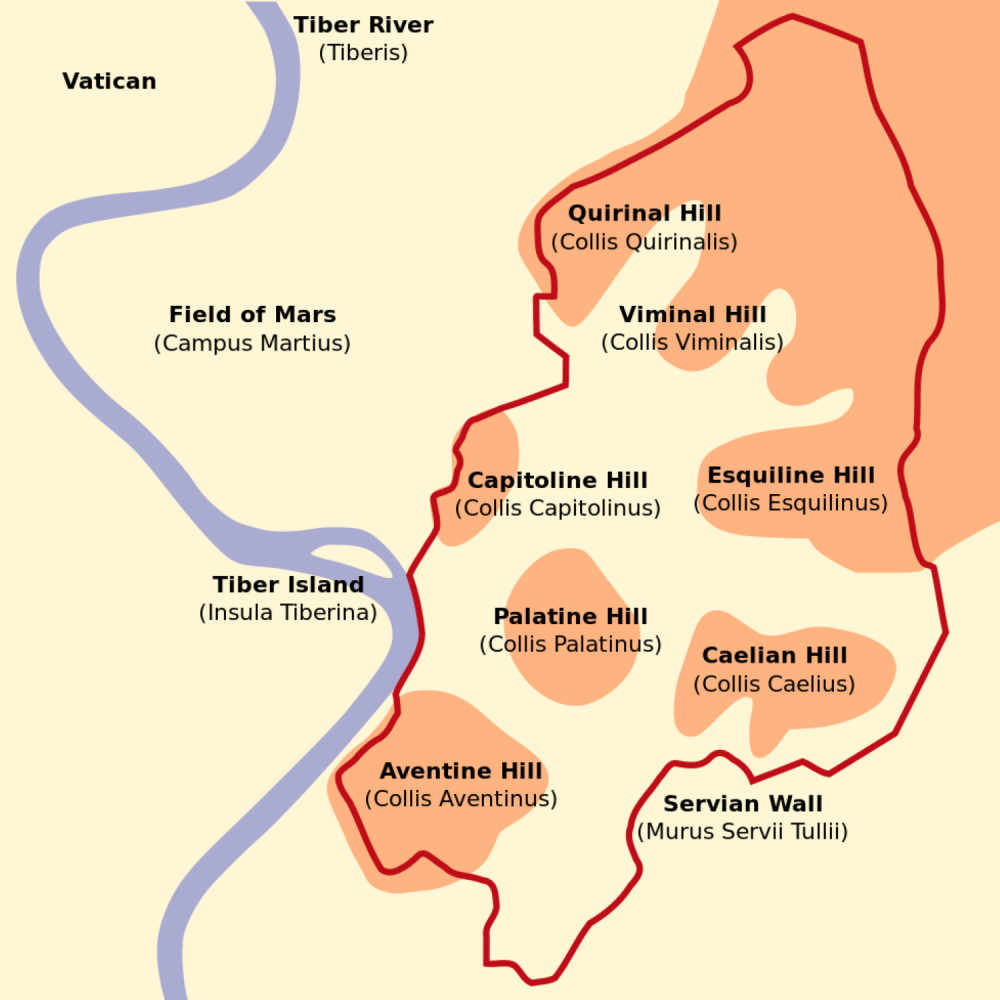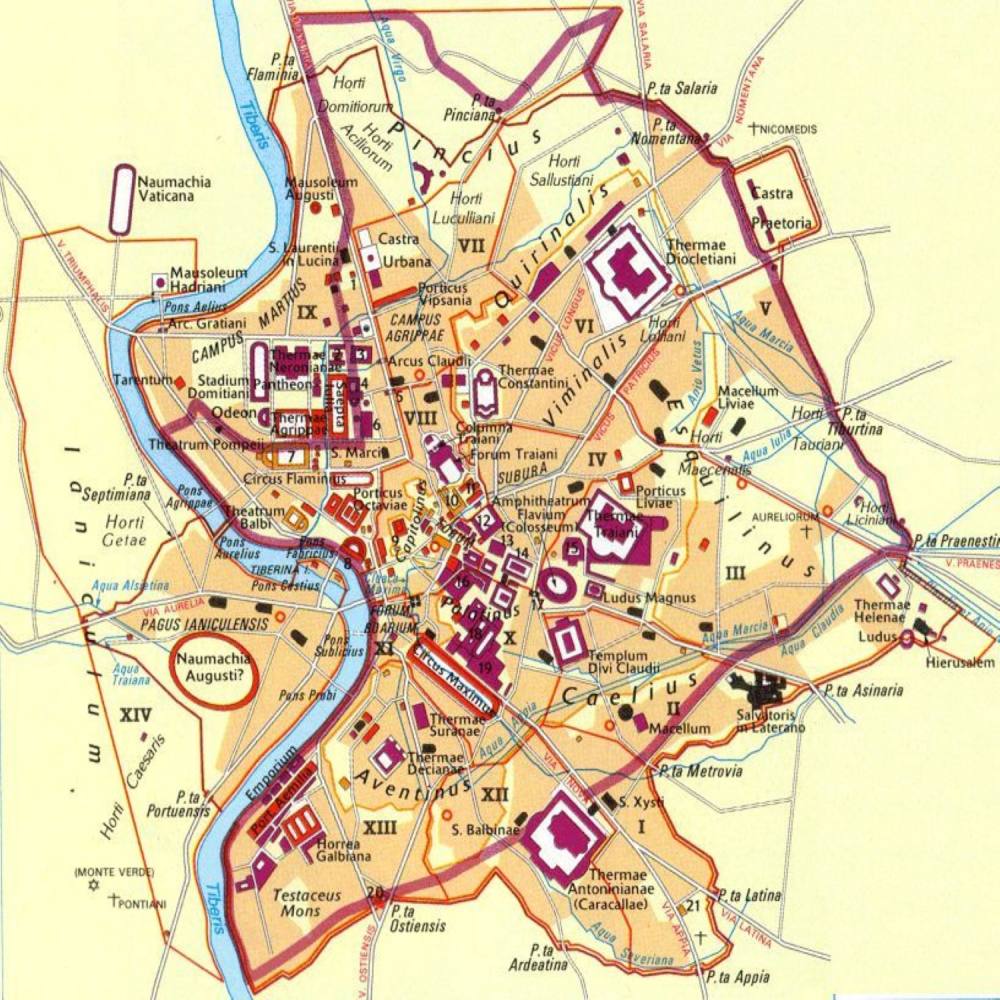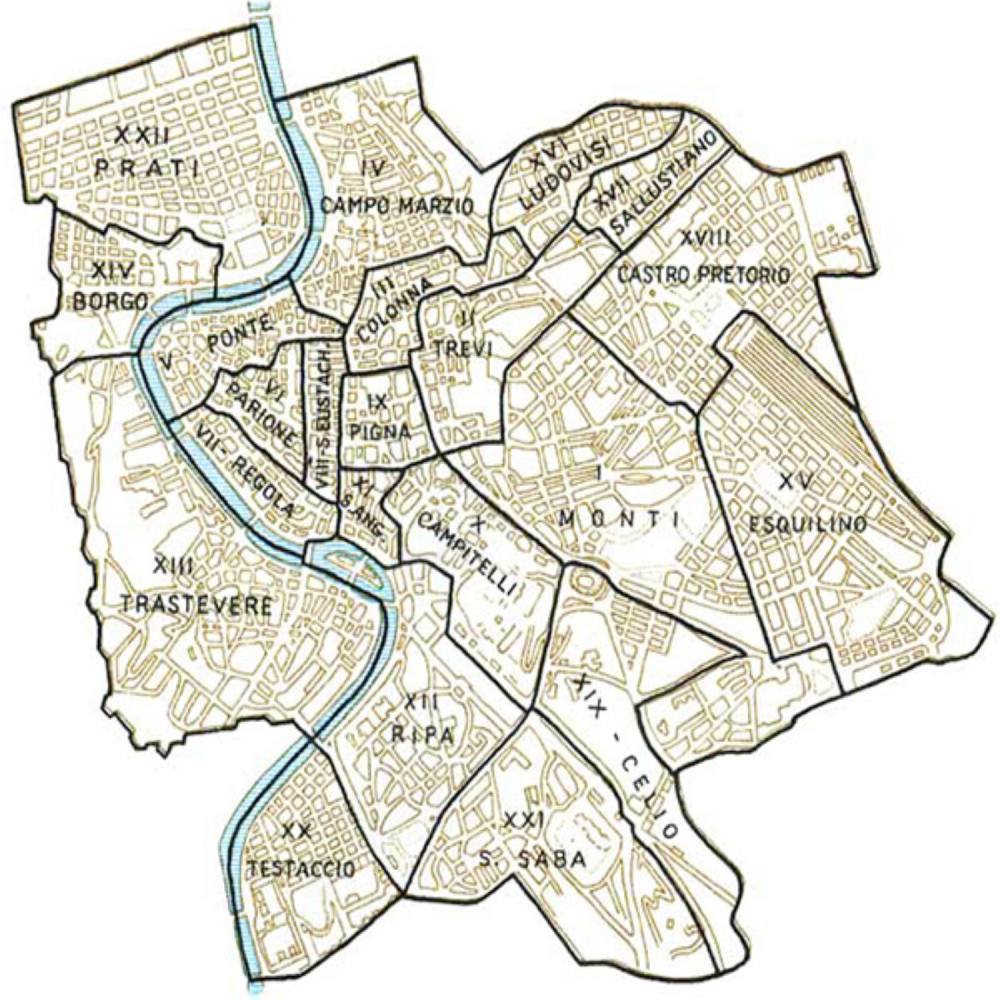Rome
Rome is called ‘the eternal city’ and its iconic monuments alone can fully occupy a visit. The entire Historic Centre of Rome is a World Heritage site. Yet the depth and breadth of Rome’s history means that there are many more joys to be discovered if you can linger or return. We’ve spent several weeks in Rome on four trips to Italy so far and have developed our own perspective on this great city.
The Tridente
One of our favourite places in Rome is Piazza del Popolo. The Church of Santa Maria del Popolo has two Caravaggio paintings that were commissioned for the Cerasi Chapel in 1600 and it is amazing to see them still in their original location. Stepping out into the piazza you can then choose to walk down one of the three streets that radiate south taking you to different parts of the city. This street complex is known as the Tridente (trident). We’ve used it to ‘zone’ Rome when planning visits because there’s just so much to see.
(1) Facing south towards the city centre, Via del Babuino is on the left and will lead you into the eastern districts with many excellent museums and churches. (2) On the right is Via di Ripetta which will lead you towards Ponte Sant’Angelo where you can cross the Tiber and head west to the Vatican then south to the Centro Storico and across the river to Trastevere. (3) The middle street of Via del Corso will lead you straight into the heart of Ancient Rome. (4) South of Ancient Rome there are districts that have less tourist traffic but many interesting things to see and do. The places we’ve visited in these four zones are summarised below. We like to explore cities on foot so the information is presented in the format of walking tours.
1. Eastern Rome
- On our first visit to Rome we stayed in the rione (administrative district) of Prati, in the northwest of the city near the Vatican. It is an easy walk to Piazza del Popolo and we found this the ideal place to begin each day’s exploration of the city. Santa Maria del Popolo with its Caravaggio paintings makes a fine start to any day. From the piazza, looking south towards the city centre, Via del Baubino is the street to your left.
- Before plunging in it’s worth taking the steps up to Pincio Hill which has great views over the city. The gardens stretching north and east house two important museums. The outstanding Galleria Borghese and the excellent Etruscan museum of Villa Giulia.
- As you head south down Via del Baubino there’s a smaller street called Via Margutta that runs in parallel and it’s a pleasant alternative. Either way you’ll reach the Spanish Steps.
- A short detour via Piazza Barberini will take you to the Capuchin Chiesa di SM della Concezione which has a creepy ossuary. The Capuchins seem to have a thing about skulls and bones…
- Heading south from the Spanish Steps on the fabulously named Via di Propaganda you’ll reach the Trevi Fountain.
- Rome is built on seven hills. Quirinale Hill (1/7) to the east houses the Presidential Palace. Viminal Hill (2/7) is a little further south.
- There are several interesting churches around Viminal Hill. We visited Santa Pudenziana, Basilica di Santa Maria Maggiore, and Santa Prassede when exploring Early Christian Rome. The Basilica di San Pietro in Vincoli (St Peter in chains) is nearby.
- Rome has four excellent museums focused on aspects of its history, called Museo Nazionale Romano (MNR). It takes more time to visit multiple MNR than a single mega-museum, but we really like the way this has been done as it makes Rome’s rich history more digestible.
- Two of the MNR are in the area around Termini, the main railway station. MNR Palazzo Massimo alle Terme specialises in frescoes, as well as mosaics, sculpture and jewellery. MNR Terme di Diocleziano specialises in funereal artworks and decorations. It includes a cloister designed by Michelangelo that was originally attached to the adjacent Basilica di Santa Maria degli Angeli.
- The other site we’d highly recommend in Eastern Rome is the 4th C church of Santa Costanza and the adjacent church of Sant’Agnese. It’s a 40 minute walk or 15 minute bus ride northeast from Termini.
2. Western Rome
- Heading south from Piazza del Popolo down Via Ripetta you come to the Museo dell’Ara Pacis (Altar of Peace) housed in a modern structure. Standing opposite in stark contrast is the ruined Mausoleum of Augustus.
- Western Rome is particularly rich in sightseeing options and it’s best to separate the Vatican, Centro Storico, and Trastevere.
- The best way to approach the Vatican from Ara Pacis is to hug the south bank of the Tiber and resist both Ponte Cavour and Ponte Umberto until you come to the historic Ponte Sant’Angelo. Crossing this beautiful bridge you reach Castel Sant’Angelo, built as a mausoleum for the Emperor Hadrian. Turning left down the grand Via della Conciliazione brings you to Piazza San Pietro, St Peter’s Basilica, and the Vatican Museums.
- Backtracking to Ponte Sant’Angelo and crossing to the south brings you to the Centro Storico (old town). It has several focal points.
- The beautiful Piazza Navona sits at the heart of the Centro Storico. Chiesa di Sant’Agnese in Agone faces onto the piazza. Santa Maria della Pace is nearby, as are San Luigi dei Francesi and Chiesa Di Sant’Agostino, both of which house paintings by Caravaggio.
- Heading east the extraordinary Roman Pantheon is the next focal point. Rome’s only gothic church, Chiesa di Santa Maria Sopra Minerva is nearby.
- Between the Pantheon and Via del Corso a little further to the east there are several worthwhile sites. From north to south they include Palazzo Chigi, Piazza Colonna, Tempio Adriano, Piazza Sant’Ignazio, St Ignazio di Loyola, and the excellent Galleria Doria Pamphilj.
- The main road of Corso Vittorio Emanuele II cuts through the Centro Storico on its way to Piazza Venezia. To the south lies Campo de’ Fiori, another lively piazza. Basilica Sant’Andrea della Valle and Palazzo Spada are nearby.
- To the east is Largo di Torre Argentina. Chiesa del Gesu, Palazzo Mattei, and MNR Crypta Balbi (housing a theatre, block of apartments, and patio built between 19 and 13 BC) are nearby. Further south lie the Jewish ghetto, Teatro Marcello, and Tempio di Ercole e Portunus.
- Crossing the river Tiber via the island of Isola Tiberna brings you to the rione of Trastevere. It has cool shops, galleries, and restaurants, and some fabulous churches. The Basilica Santa Maria in Trastevere, Santa Cecilia in Trastevere, Chiesa di San Francesco a Ripa, and San Pietro in Montorio featuring the Tempietto di Bramante.
2. Western Rome
- Heading south from Piazza del Popolo down Via Ripetta you come to the Museo dell’Ara Pacis (Altar of Peace) housed in a modern structure. Standing opposite in stark contrast is the ruined Mausoleum of Augustus.
- Western Rome is particularly rich in sightseeing options and it’s best to separate the Vatican, Centro Storico, and Trastevere.
- The best way to approach the Vatican from Ara Pacis is to hug the south bank of the Tiber and resist both Ponte Cavour and Ponte Umberto until you come to the historic Ponte Sant’Angelo. Crossing this beautiful bridge you reach Castel Sant’Angelo, built as a mausoleum for the Emperor Hadrian. Turning left down the grand Via della Conciliazione brings you to Piazza San Pietro, St Peter’s Basilica, and the Vatican Museums.
- Backtracking to Ponte Sant’Angelo and crossing to the south brings you to the Centro Storico (old town). It has several focal points.
- The beautiful Piazza Navona sits at the heart of the Centro Storico. Chiesa di Sant’Agnese in Agone faces onto the piazza. Santa Maria della Pace is nearby, as are San Luigi dei Francesi and Chiesa Di Sant’Agostino, both of which house paintings by Caravaggio.
- Heading east the extraordinary Roman Pantheon is the next focal point. Rome’s only gothic church, Chiesa di Santa Maria Sopra Minerva is nearby.
- Between the Pantheon and Via del Corso a little further to the east there are several worthwhile sites. From north to south they include Palazzo Chigi, Piazza Colonna, Tempio Adriano, Piazza Sant’Ignazio, St Ignazio di Loyola, and the excellent Galleria Doria Pamphilj.
- The main road of Corso Vittorio Emanuele II cuts through the Centro Storico on its way to Piazza Venezia. To the south lies Campo de’ Fiori, another lively piazza. Basilica Sant’Andrea della Valle and Palazzo Spada are nearby.
- To the east is Largo di Torre Argentina. Chiesa del Gesu, Palazzo Mattei, and MNR Crypta Balbi (housing a theatre, block of apartments, and patio built between 19 and 13 BC) are nearby. Further south lie the Jewish ghetto, Teatro Marcello, and Tempio di Ercole e Portunus.
- Crossing the river Tiber via the island of Isola Tiberna brings you to the rione of Trastevere. It has cool shops, galleries, and restaurants, and some fabulous churches. The Basilica Santa Maria in Trastevere, Santa Cecilia in Trastevere, Chiesa di San Francesco a Ripa, and San Pietro in Montorio featuring the Tempietto di Bramante.
3. Ancient Rome
- Taking the middle prong of the Tridente from Piazza del Popolo leads straight to the heart of Ancient Rome.
- First it is necessary to negotiate Piazza Venezia and the Victor Emmanuel II National Monument known as the Vittoriano. This controversial monument (also known as ‘the typwriter’ and ‘the wedding cake’) is a cypher for many issues related to the modern Italian state and its relationship to the past.
- To the left of the Vitorriano, Via dei Fori Imperiali runs southeast to the Colosseum. Off to the left / north is Trajan’s Market and the Torre dei Milizie. Off to the right / south is the Roman Forum.
- Alternatively, heading right from the Vittoriano leads you to Via di Teatro Marcello then up one set of steps to Santa Maria in Aracoeli, and another set of steps (the Cordonata Capitolina) to Piazza di Campidoglio and the Capitoline Museum, all sitting atop the Capitoline Hill (3/7).
- The Colosseum and nearby Constantine’s Arch sit in a valley between two of Rome’s seven hills. Palatine Hill (4/7) to the south is where Rome was supposedly founded by Romulus and Remus, and where Roman aristocracy lived in the golden age. It looks down onto Circo Massimo. Esquiline Hill (5/7) is to the north of the Colosseum.
4. Southern Rome
- Caelian Hill (6/7) lies southeast of the Colosseum. We visited several interesting churches in this area exploring Early Christian Rome.
- Basilica San Clemente is a gem. It’s a great place to see how Rome has been built and rebuilt on top of itself over the centuries, with a 12th C church built on top of a 4th C church, built on top of an apartment building from 64 AD.
- Nearby Santi Quattro Coronati has a lovely cloister.
- Basilica di San Giovanni in Laterno is the catherdal church of Rome. A little further to the east is Santa Croce in Gerusalemme founded in 329 by Saint Helena to house relics she brought back from the Holy Land. Circling back to the east you can visit Santo Stefano Rotondo and Santa Maria in Domnica.
- The church of San Giovanni e Paolo is fronted by a lovely piazza. Around the corner is a medieval arcade called Clivio Scauro where you can access the Case Romane del Celio. With 20 rooms from four buildings built between the first and fourth centuries, it’s another great place to time travel through the history of Rome.
- San Gregorio Magno is a baroque church nearby.
- Across the main road of Via delle Terme lies the Terme di Caracalla (Baths of Caracalla) where you can wander amongst impressive ruins in a parkland setting.
- Aventine Hill (7/7) is the most southerly of the seven hills. On our first ever night in Rome we visited the Benedictine church of Sant’Anselmo and listened to the monks sing their evening prayers in Gregorian chant.
- Below Aventine Hill on a bend in the river is the rione of Testaccio. Here you can get a sense of the scale of commercial activity in Ancient Rome by visiting the Emporio (Roman Port) and Monte Testaccio, a 40 metre high hill made entirely from broken amphorae, the pottery jars used to transport olive oil from the colonies.
- Il Mattatoio is an old slaughterhouse that has been converted into a contemporary art museum.
- The British War Cemetery is a simple and powerful monument to the dead. The nearby Protestant Cemetery is a great place to wander. The English poets John Keats and Percy Bysshe Shelley are buried there. The curious Piramide of Cestius was built as a tomb in the first century BC. Piramide railway station is nearby making this a good place to end or begin your explorations.
4. Southern Rome
- Caelian Hill (6/7) lies southeast of the Colosseum. We visited several interesting churches in this area exploring Early Christian Rome.
- Basilica San Clemente is a gem. It’s a great place to see how Rome has been built and rebuilt on top of itself over the centuries, with a 12th C church built on top of a 4th C church, built on top of an apartment building from 64 AD.
- Nearby Santi Quattro Coronati has a lovely cloister.
- Basilica di San Giovanni in Laterno is the catherdal church of Rome. A little further to the east is Santa Croce in Gerusalemme founded in 329 by Saint Helena to house relics she brought back from the Holy Land. Circling back to the east you can visit Santo Stefano Rotondo and Santa Maria in Domnica.
- The church of San Giovanni e Paolo is fronted by a lovely piazza. Around the corner is a medieval arcade called Clivio Scauro where you can access the Case Romane del Celio. With 20 rooms from four buildings built between the first and fourth centuries, it’s another great place to time travel through the history of Rome.
- San Gregorio Magno is a baroque church nearby.
- Across the main road of Via delle Terme lies the Terme di Caracalla (Baths of Caracalla) where you can wander amongst impressive ruins in a parkland setting.
- Aventine Hill (7/7) is the most southerly of the seven hills. On our first ever night in Rome we visited the Benedictine church of Sant’Anselmo and listened to the monks sing their evening prayers in Gregorian chant.
- Below Aventine Hill on a bend in the river is the rione of Testaccio. Here you can get a sense of the scale of commercial activity in Ancient Rome by visiting the Emporio (Roman Port) and Monte Testaccio, a 40 metre high hill made entirely from broken amphorae, the pottery jars used to transport olive oil from the colonies.
- Il Mattatoio is an old slaughterhouse that has been converted into a contemporary art museum.
- The British War Cemetery is a simple and powerful monument to the dead. The nearby Protestant Cemetery is a great place to wander. The English poets John Keats and Percy Bysshe Shelley are buried there. The curious Piramide of Cestius was built as a tomb in the first century BC. Piramide railway station is nearby making this a good place to end or begin your explorations.
Going beyond the iconic
A visit to Rome can be completely consumed by seeing the iconic sites, such as the Colosseum, Forum, Trevi Fountain, Vatican etc. Yet there are so many other great things to see and do.
Here’s a dozen of our ‘second tier’ favourites from across the four zones:
- Santa Maria del Popolo – See Caravaggio’s Conversion of Saint Paul and Crucifixion of Saint Peter where he painted them in 1600.
- MNR Palazzo Massimo alle Terme – Great collection of frescoes, mosaics, sculpture and jewellery in an interesting building complex.
- Santa Costanza – A gorgeous 4th C church and mausoleum, built in the round with excellent mosaics.
- Santa Maria della Pace – Beautiful Baroque architecture in a lovely area west of Piazza Navona.
- Galleria Doria Pamphilj – This excellent collection is hung according to an inventory taken in 1760 providing an interesting view of 18th C tastes.
- San Pietro in Montorio – See the Tempietto, an architectural jewel designed by Donato Bramante in 1508.
- Capitoline Museum – Housed in twin palaces on opposite sides of a Michelangelo piazza, this is the oldest public gallery in the world.
- Trajan’s Market – Great museum set inside a massive, semicircular building that looks out over Ancient Rome
- Basilica San Clemente – 12th C church built on top of a 4th C church, built on top of a Roman apartment building from 64 AD.
- Clivio Scauro and Case Romane del Celio – Step off a medieval street into a complex of 20 rooms from four buildings built between 1st and 4th C.
- Monte Testaccio – Eat in a restaurant carved into the base of a 40 metre high hill made entirely of broken amphorae (pottery vessels).
- Protestent Cemetery – Wander this lovely green space where poets, communists, and other louche characters are buried.
Outskirts of Rome
There are so many things to see and do in the city of Rome that it feels like overkill to be talking about the outskirts. Yet the reality is there are some fantastic half day or day trips to be done if you have the time. These are our favourites.
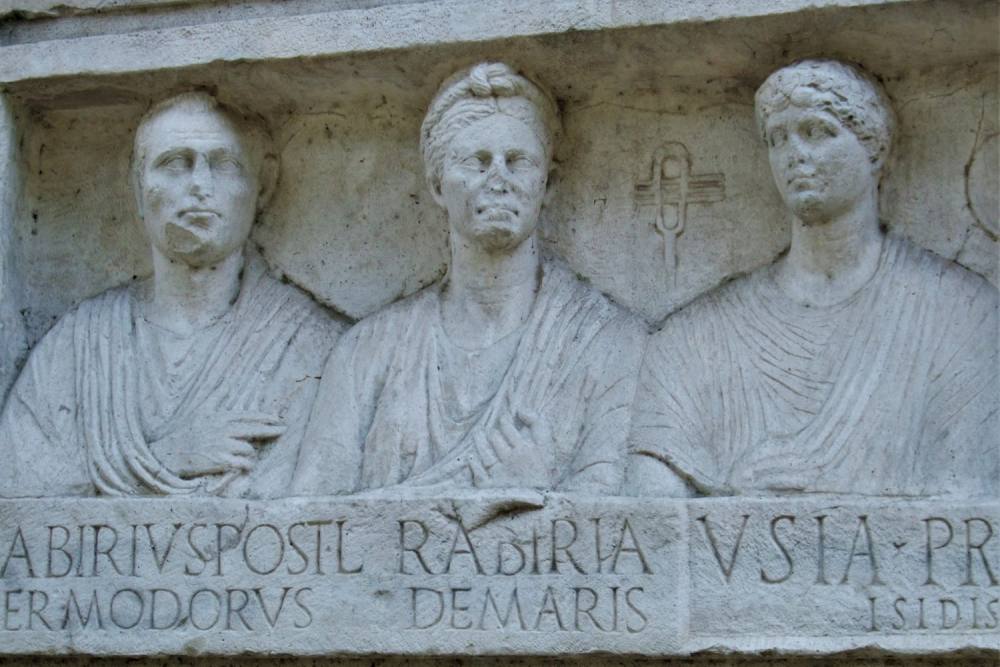
The Appian Way
The Appian Way was the first of the great Roman roads. It was built in 312 BC linking the capital with the port town of Brindisi 260 kms to the southeast. Walking or cycling along the Appian Way is a great morning or afternoon outing. There are many monuments to see along the way and it’s a special thing to traverse wheel-rutted cobble stones that are over 2,000 years old. To reach the start of the Appian Way we walked to Porta San Sebastiano, a well preserved gate through the Aurelian Walls. From there we hired bicycles and rode as far as Villa Quintili before turning around and heading back.
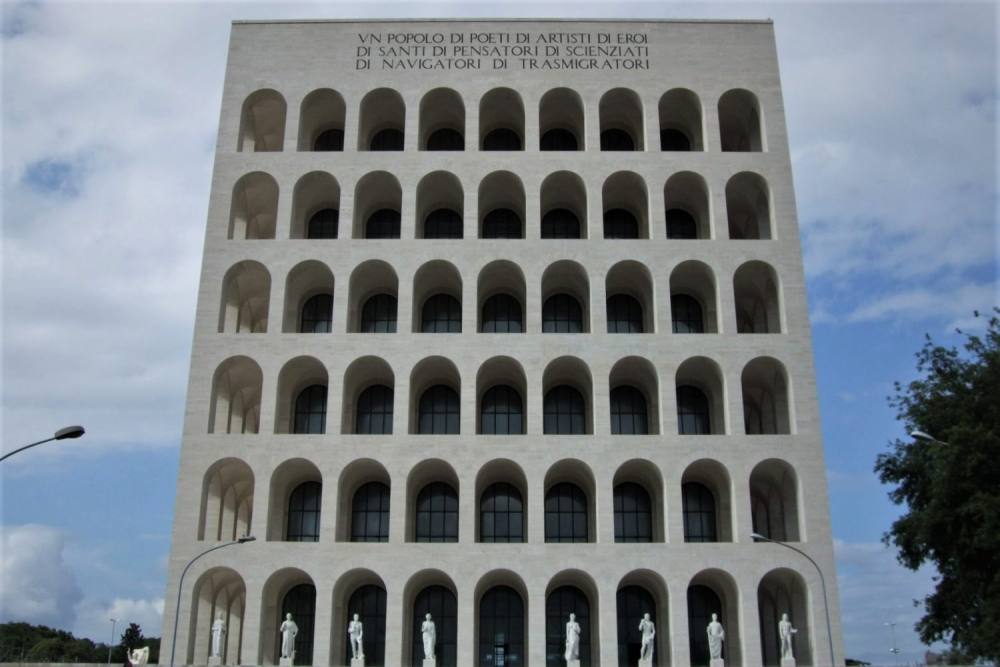
EUR
The district of EUR is fascinating for its Fascist-era architecture which reinterprets classical monuments in a rationalist style using acres of travertine. It was meant to be built for a world expo in 1942 called Esposizeione Universale Romana (EUR) which was never held due to World War II. After the war it was refocused as a business and government district. The unfinished Fascist-era buildings were completed and other new buildings were built set in large gardens and parks. EUR sits at the southern end of Metro Line B, about 20 minutes by train from Termini. It’s well worth a morning or afternoon visit.
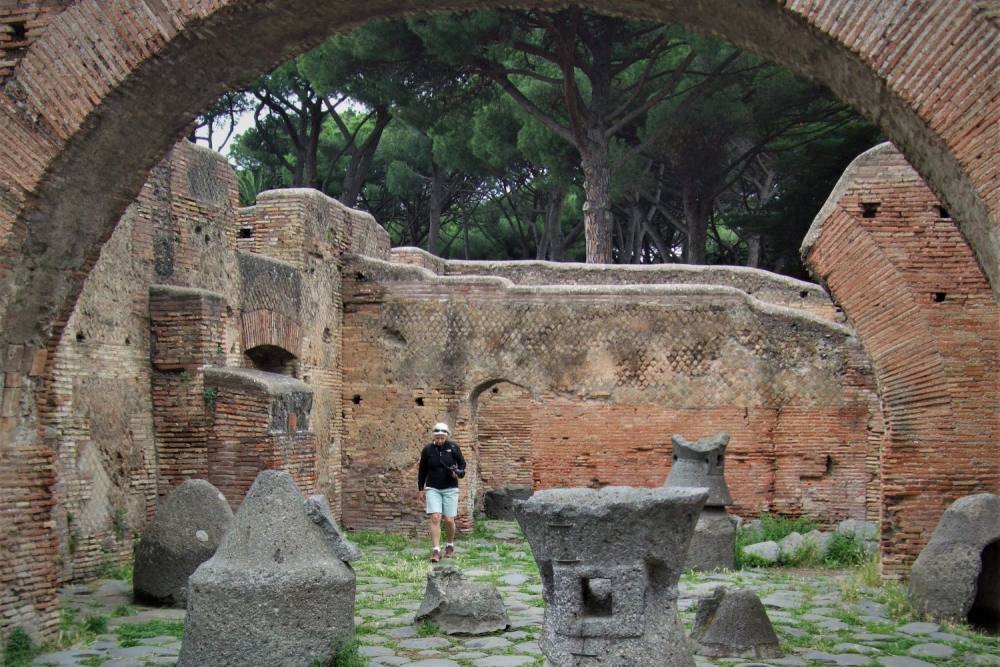
Ostia Antica
The city of Rome was capital of an empire, and from 330 BC to 476 AD Ostia Antica was its seaport. It’s a large site (50 hectares) with many well preserved buildings. Over time it was gradually covered by silt and as the Tiber changed its course the coastline receded and this once great port was left landlocked and buried. It was only excavated in the early 20th C. It’s about 30 minutes by train from Rome and is most definitely worth a full day visit. It has streets, a theatre, forums, bars, baths, latrines, grain mills, mosaics, and frescoes. Everything you need to be transported back to Ancient Roman.
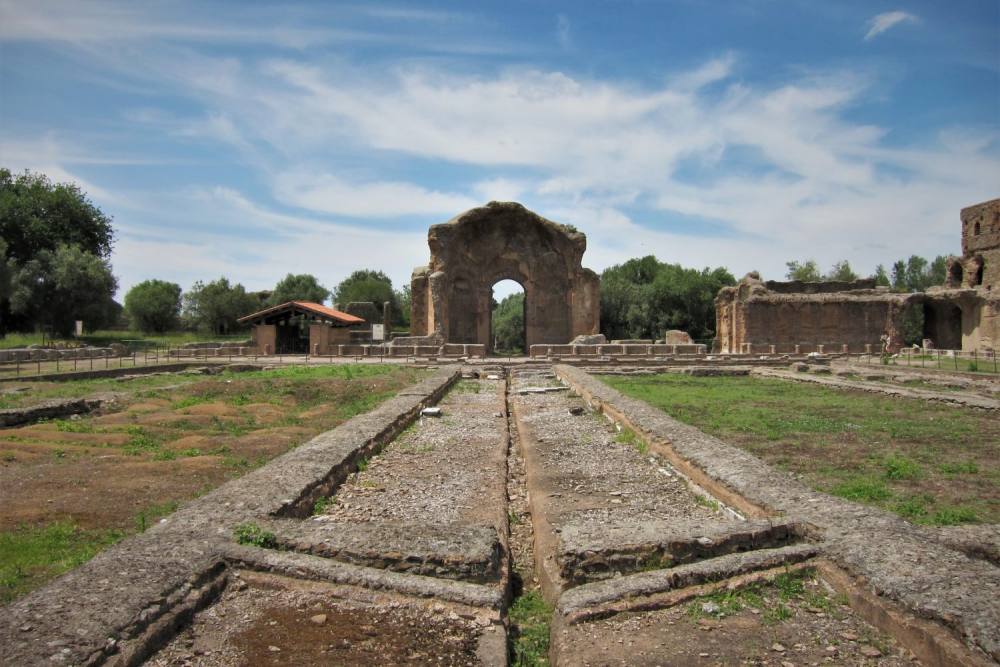
Hadrian's Villa and Villa d'Este
The Emperor Hadrian built his country villa on a gentle slope near the town of Tivoli, about 30 kms east of Rome. It was constructed between 118 and 134 AD. The whole site takes up about 120 hectares of which 40 hectares are open to the public. It has many fine structures including the walls, Canopus (small lake lined with statues), Grand Baths, and Villa, and is a World Heritage site. Nearby is the Villa d’Este with a palace and amazing gardens laid out in the late 16th C, also a World Heritage site. The two villas are 1 km apart and about an hour by bus from Rome, so it’s possible to visit both in a long, fulfilling day.

